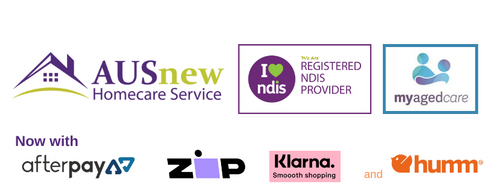After 15 years out of the workforce, Samantha Spence was overjoyed when she finally found a job — and surprisingly, she has COVID-19 to thank for it.
Key points:
- The shift to remote and flexible working during the pandemic has created new job opportunities
- Samantha Spence lives with multiple sclerosis and needs to work from home
- She found a job in February after months of searching
While the pandemic has caused job cuts for many, it has also led to new opportunities for some Australians living with a disability.
The shift towards flexible and remote working has given people who cannot physically attend a site or office the chance to join the workforce.
Mrs Spence, 57, decided 18 months ago she was ready to return to work after spending years learning how to manage the symptoms of multiple sclerosis (MS).
Mrs Spence has worked in retail management, interior decorating, and as a dental nurse, but despite her extensive experience, she struggled to find a suitable position.
"It was really, really hard because there was not a whole lot of jobs where I could actually work from home," she said.
But, thanks to the pandemic, she noticed a surge in job advertisements offering remote working and in February she landed a part-time job with an energy saving company.
"It's absolutely wonderful," she said.
The Adelaide mother-of-two said working from home allowed her to manage the seizures, fatigue, pain and mobility issues that can occur as part of her MS.
Mrs Spence has pain in her right side constantly, but it can escalate and leave her unable to move if she does not carefully monitor her activity levels.
"The pins and needles will hit, then the heaviness will hit and it's really hard to move around," she said.
"So that's why if I had to drive to a job, do a job for eight hours, five days a week, and then drive home, it would be extremely difficult."
She is one of many Australians now working from home.
Data from an Australian Bureau of Statistics survey showed 41 per cent of people worked from home at least once a week in February, almost double the number compared to before the pandemic.
Mrs Spence's home office, which was set up with assistance from The MS Society, includes a chair with back support, a cushion to keep her right leg elevated, and space to regularly stretch — as well as plenty of room for her assistance dog Boston.
"I can move around and do the exercises easily without worrying anyone else as well," she said.
Mrs Spence said being back in the workforce had improved her self-esteem.
"I don't feel useless, because after being out of work for so long and having a MS foggy brain and thinking that I maybe can't learn new things," she said.
"If I don't know something, I just get onto Teams and quickly ask someone."
Disability inclusion expert and Flinders University lecturer Dr June Alexander said the pandemic had caused job losses for some people living with disability working in hard-hit sectors such as tourism and hospitality, but it had also created opportunities for others.
"And that's around the flexible working hours and being able to work from home as well, so they are definitely advantages for people with disabilities," she said.
Dr Alexander said some people have pain or fatigue at different parts of the day.
"So being able to work at home allows them to take breaks and then get back to work, so those flexible hours are really important for some people," she said.
A 2020 report from the Australian Institute of Health and Welfare showed 48 per cent of working-aged people living with disability were employed, compared to 80 per cent for those without disability.
The report also showed 93 per cent of unemployed people with disability have experienced difficulties finding a job.
Dr Alexander said she had "hundreds of wonderful stories" about people with disability "changing their lives with a job".
Dr Alexander said there were "so many advantages" for people to be in work.
"In terms of mental health we know it is better for everyone to be working, [it] increases self-esteem," she said.
"It also obviously increases your ability to do activities and to buy things that you enjoy, so it's so important for us to have a job.
"And also in our culture the first thing we say when we meet people after your name is, what do you do?
"So being able to say, this is what I do and be proud of that, it's just so worthwhile for people with disabilities — and everyone."
As Australia emerges from lockdowns, many hope flexible working will be here to stay.
"Being back at work, I'm so grateful they gave me a chance and put their faith in me," Mrs Spence said.
